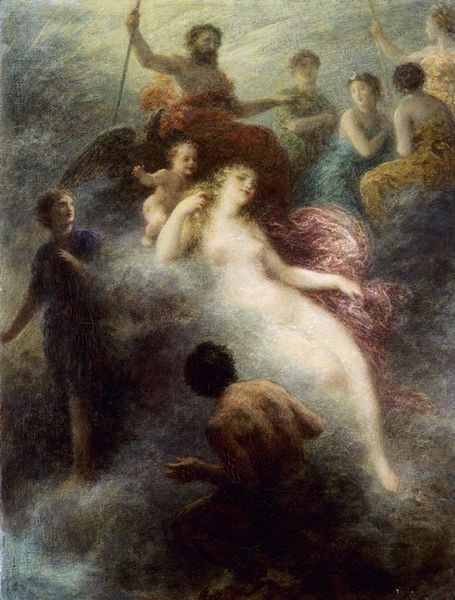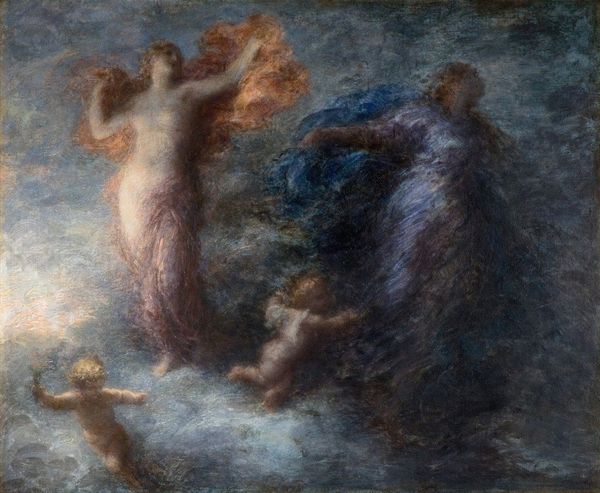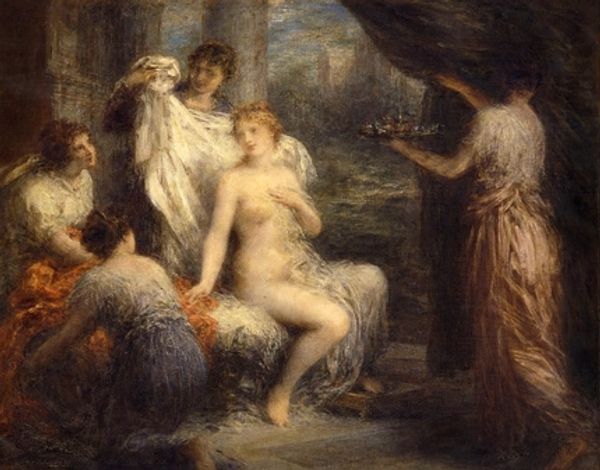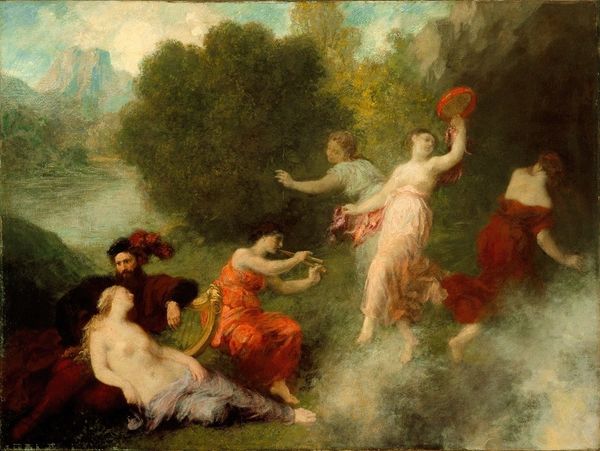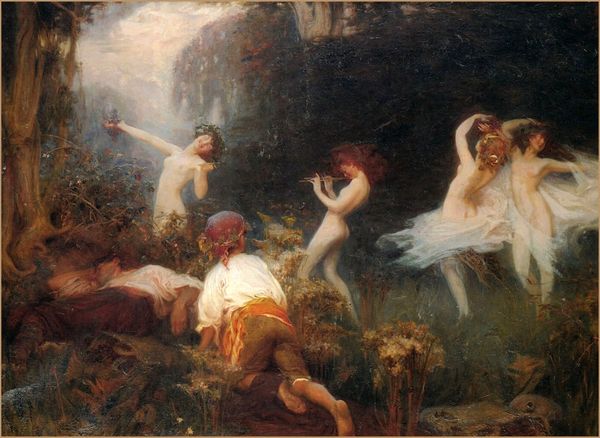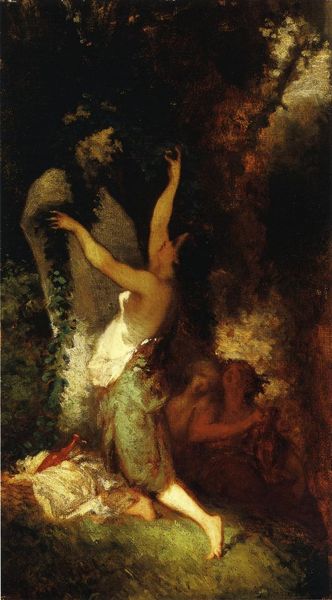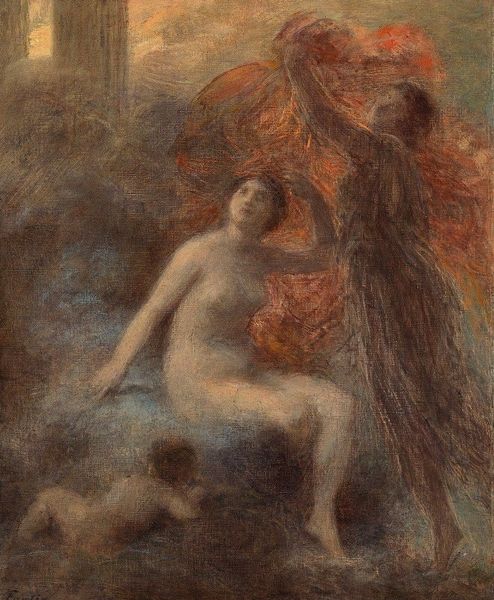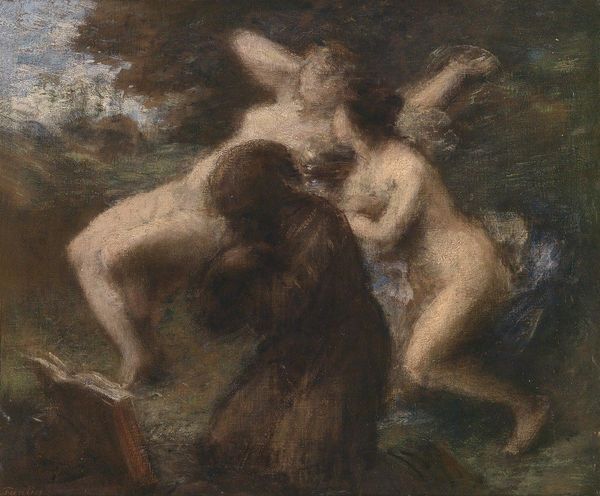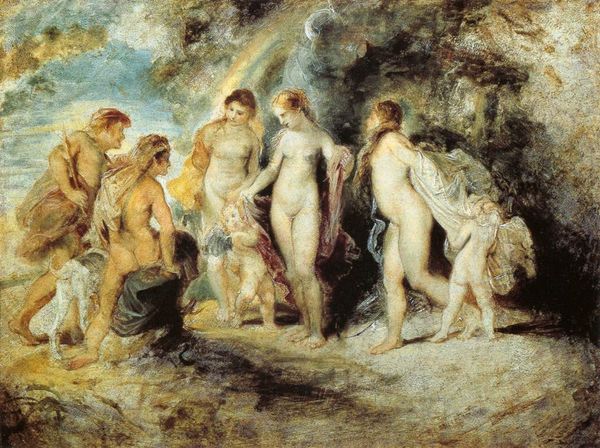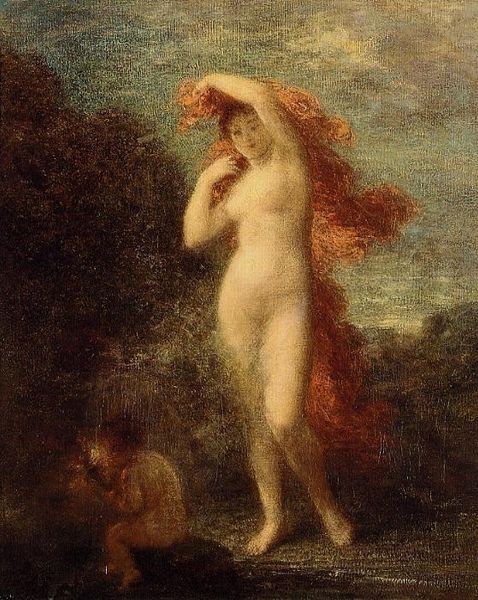
Copyright: Public Domain: Artvee
Curator: Henri Fantin-Latour's "La tentation de saint Antoine", created in 1897, presents a fascinating exploration of temptation through oil on canvas. What are your immediate thoughts? Editor: Well, I’m struck by its dreamlike quality. The figures seem to emerge from the shadows, almost like thoughts taking form. There’s a palpable tension, an unease hanging in the air despite the sensuality. Curator: Indeed. Fantin-Latour positions Saint Anthony in a vulnerable, almost pitiable stance, overwhelmed by the figures representing temptation. This resonates strongly when we consider the prevailing social anxieties of the fin de siècle – anxieties surrounding the changing roles of women and the allure of the forbidden. Editor: That’s a crucial point. We can’t separate this work from the evolving representation of women in art and society. They are no longer just passive muses; here, they wield power, offering forbidden fruit, a stark commentary on the perceived dangers of female agency. I notice that they occupy much of the upper visual space compared to Anthony who cowers near the painting's lower-central space. Curator: Absolutely. And if we delve into the Symbolist movement, it becomes even richer. Fantin-Latour was moving amongst other prominent symbolists, reflecting society’s fascination with the subconscious and the darker aspects of human nature. Editor: The historical context adds layers, of course. The figure of Saint Anthony had been depicted numerous times throughout history – often in much more didactic ways. Fantin-Latour eschews any sense of moral certainty; he presents the internal struggle in a much more ambiguous light. Are we meant to judge the saint or empathize with the impossibility of escaping temptation? Curator: Perhaps it is less about judgment and more about recognition. To acknowledge temptation, the pervasive tension between desire and renunciation as a core aspect of human existence. We are all in some sense, Saint Anthony. Editor: I agree. I leave this feeling a strong need to grapple with the work and explore those ambiguities. Curator: For me it has sparked yet another inquiry into what, if anything, changed from the fin de siècle until today in how our culture views, judges, and accepts, powerful female desire.
Comments
No comments
Be the first to comment and join the conversation on the ultimate creative platform.
